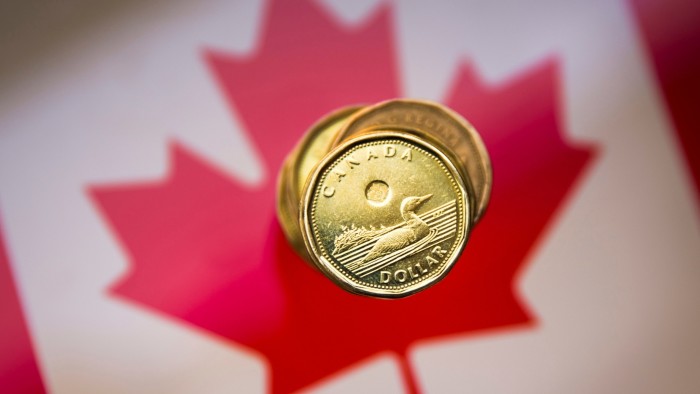Unlock the Editor’s Digest for free
Roula Khalaf, Editor of the FT, selects her favourite stories in this weekly newsletter.
The Canadian dollar, known as the loonie after the bird that graces it, got its wings clipped in 2024. Growing domestic political turmoil — Justin Trudeau announced on Monday that he would step down as prime minister and leader of the Liberal party — and the threat of new tariffs from the incoming Trump administration will keep it caged in 2025.
The currency fell almost 8 per cent against the greenback last year and briefly hit a four-year low of C$1.44 last week. Unlike previous bouts of weakness, there was no oil price crash or a global financial crisis to blame. Instead, much of last year’s retreat was down to interest rates. Currency investors go where they can earn a higher rate of interest on their deposits. After five consecutive cuts, the Bank of Canada’s interest rate at present stands at more than 110 basis points below the midpoint of the Federal Reserve’s target range. The gap is much wider since the start of 2024.
Investors have good reasons to be downbeat on the loonie. Since the Covid-19 pandemic, Canada’s fortunes have diverged from those of its neighbour. Between 2019 and 2023, America’s real GDP grew almost 10 per cent while Canada’s expanded by 6 per cent, according to IMF data. For 2024, Canada’s economy is expected to grow just 1.2 per cent, compared with a 2.8 per cent growth forecast for the US.
Behind that is the middling price of energy, Canada’s biggest export. Brent crude oil, at about $75 a barrel, is trading at roughly a third less than in 2022 when prices spiked following Russia’s full-scale invasion of Ukraine. Without the cushion of gushing oil revenue, issues that investors may have brushed off in the past become hard to ignore. Among them are high household debt, a shrunken manufacturing base, a long-standing productivity problem, weakening domestic consumption and rising unemployment.
As Donald Trump has indicated in the past, a weak currency can be no bad thing. In theory, a sagging loonie should keep Canadian exports competitive. But with Trump threatening to slap a 25 per cent tariff on Canadian goods, strong leadership and a stable government will be needed to navigate this risk. Trump reiterated his suggestion for Canada to become the 51st US state just hours after Trudeau announced his resignation.
If there’s a consolation, it’s that investors were already very gloomy. Short bets on the Canadian dollar reached a record $14bn in August and have probably peaked. Still, like the common loon after which it shares its name, the currency will need a long runway if it is to once again get airborne.
pan.yuk@ft.com
https://www.ft.com/content/3b1994c5-d94f-47e8-a2c9-3e13f5b90780


